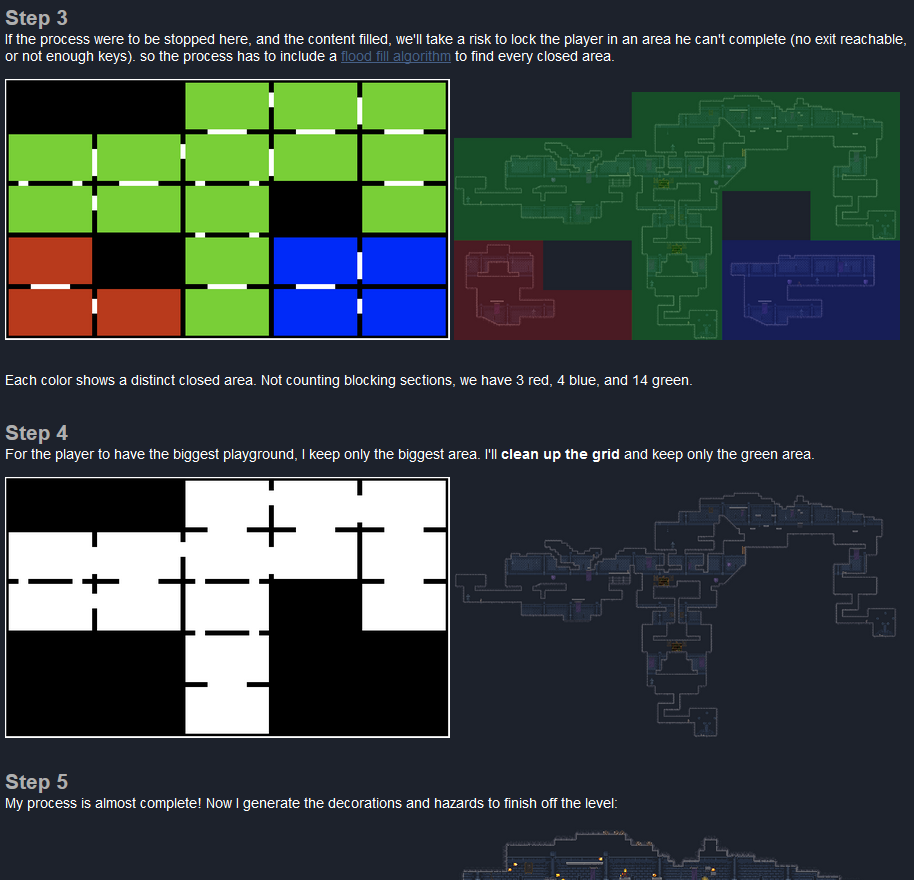
Level Generation in Ruggnar
The level generator that Cyrille Bonard implemented for the currently-in-development candle-powered platformer game Ruggnar was inspired by Spelunky but takes things in a different direction.
Of particular interest to me at the moment is that it uses a post-processing step to remove disconnected parts of the level. Spelunky’s generator doesn’t need this because the generator is specifically designed to never create a level that breaks the “golden path”. Making a generator that never produces a failed output can be a powerful design goal for a generator, but it isn’t the only way.
Ruggnar’s post-processing steps allow it to make maps that are more geometrically complicated than Spelunky, with non-rectangular maps. This also lets the earlier steps have a wider range: the connections between level sections can be much more varied than Spelunky’s carefully-designed match-ups.
Introducing a post-processing step can, if used right, enable a generator to do more than if it had to get everything right the first time.
